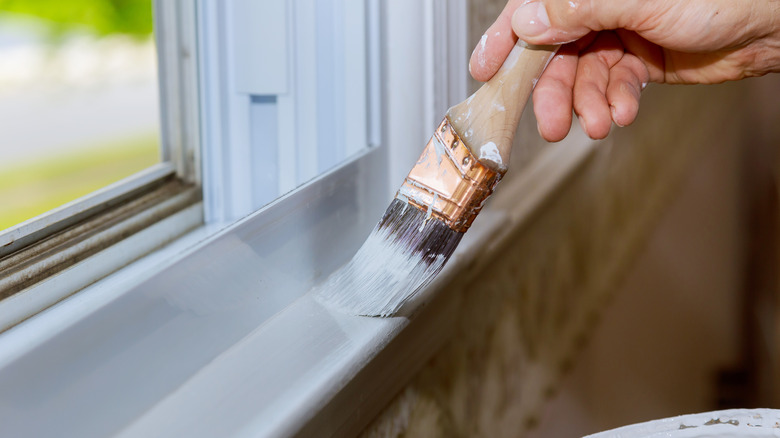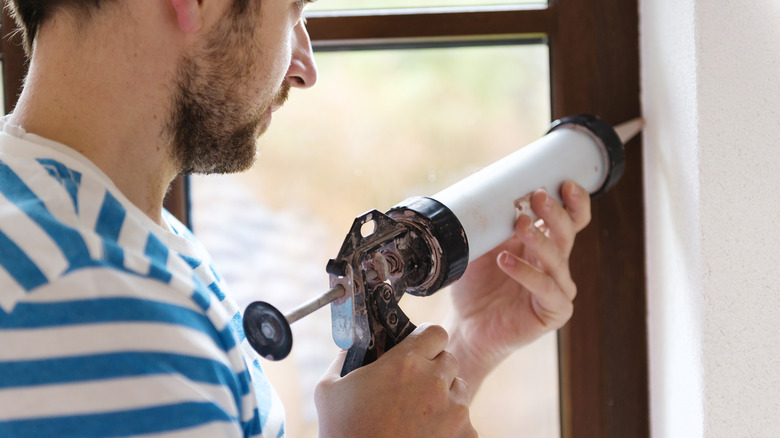Painting Window Trim? One Genius Hack Ensures The Cleanest Results Every Time
We may receive a commission on purchases made from links.
Painting trim is a quick and easy way to refresh windows, if you follow a few simple steps. When picking the right tools for the job, choose a high-quality paint and a soft brush to help ensure long-lasting results that look professional. But beyond the typical paint and paintbrush, be sure to also have a tube of silicone caulk on hand. Caulk is important when painting baseboards and it's also the secret key to painting window trim like a pro. Although it's typically used as a sealant, caulk can also help ensure the cleanest results every time while painting window trim.
As with any paint project, start by moving away nearby furnishings and laying drop cloths on the floor. Once everything is protected, wipe down the window trim with a damp cloth to remove dust and debris. Once clean, sand the area with medium-grit paper, filling in any imperfections with spackling. After that, it's time to get to the actual painting (and caulking) portion of your DIY refresh.
How to use caulk to paint window trim like a pro
Start by sticking masking tape onto the wall around your window to ensure no paint splatters from the trim to the wall. Next, run a thin line of caulk along the seam between the window trim and the tape. Be sure to select a clear caulk (like GE All Purpose Silicone Caulk) or, if you're painting the trim white, pick up the correct hue to match.
Apply a coat of primer, then get to painting, making sure to always run your brush in the same direction to minimize visible strokes. Once dry, fix any remaining imperfections or apply a second coat of paint, as needed. Finally, run a razor blade along each seam at a 45-degree angle. While some of the caulk you applied initially will remain, the tape should easily pull away, revealing a perfectly straight, professional-grade paint job. And if you accidentally got any paint on the window glass, clean it off with dish soap and warm water or boiling white vinegar, making sure to wear gloves for protection.

